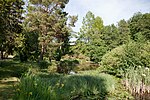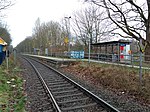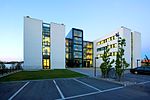Ostseestadion

The Ostseestadion is the home stadium of FC Hansa Rostock, a German association football club, located in the city of Rostock. It has a capacity of 29,000. "Ostseestadion" translates in English to "Baltic Sea Stadium", and is named after the Baltic Sea, whose coast Rostock lies upon. Ostseestadion is the original name of the stadium, but on 2 July 2007, Hansa Rostock sold the naming rights for the following 10 years to Deutsche Kreditbank (DKB), hence the new official name became "DKB Arena". In 2015, the club announced that the stadium was to regain its original name, and that the DKB had allowed an early renaming of the stadium and agreed to end the naming contract in advance.
Excerpt from the Wikipedia article Ostseestadion (License: CC BY-SA 3.0, Authors, Images).Ostseestadion
Kopernikusstraße, Rostock Hansaviertel (Hansaviertel)
Geographical coordinates (GPS) Address Website External links Nearby Places Show on map
Geographical coordinates (GPS)
| Latitude | Longitude |
|---|---|
| N 54.08495 ° | E 12.095188888889 ° |
Address
Ostseestadion (DKB-Arena)
Kopernikusstraße 17b
18057 Rostock, Hansaviertel (Hansaviertel)
Mecklenburg-Vorpommern, Germany
Open on Google Maps










